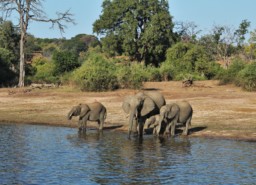Posted on 11 Feb 2014
The “tipping point” on wildlife crime is fast approaching: the extinction of key species and irreparable damage to the environment are both imminent possibilities in the near future. Growing demand for wildlife products in key markets has triggered a professionalization and aggression in poaching which is unparalleled. Armed with advanced weaponry, surveillance equipment and facilitated by extensive corruption, the criminal market in wildlife crime is now one of the most significant illicit markets in the world. Key species such as the rhino are being slaughtered at record levels. Lesser known animals are traded at a scale that is almost incomprehensible. This is no longer just a criminal act: it is warfare.
The law enforcement community, at national and international levels, has long been engaged in what are described as ‘wars’ against narcotic and firearm trafficking. These two forms of criminality share many of the same features as those of wildlife trafficking, particularly as all three involve: the harvesting or acquisition of material or products in one State; usually require illicit export from the same State; the subsequent clandestine movement of the material or products across further national borders (regularly many borders and also intercontinentally); illicit import to the State of destination; and final delivery to customers and consumers.
This paper, Policing the Trafficking of Wildlife: is there anything to be learned from drugs and firearms trafficking? is not an attempt to determine whether battles have been lost or won in each of these wars. Rather, it seeks to describe some of the strategies adopted by individual nations and international alliances to respond to drug and firearms trafficking, the manner in which they have rallied their troops, and examines whether illegal trade in wildlife can be thought of as a ‘common enemy’ and, thus, addressed in a similar fashion.
The assessment and findings presented in this report are drawn from the extensive experience of the author, a law enforcement professional with over four decades of experience. The author held the role of Chief of Law Enforcement for CITES, and during 14 years with CITES he conducted 234 missions to 66 countries, assessing enforcement in the field and designing strategies to tackle wildlife trafficking. Thus while this study may not draw upon comprehensive research, it nonetheless presents an unparalleled expert perspective of the global state of affairs.
This paper is an integral part of the Global Initiative response on Environmental Crime.



